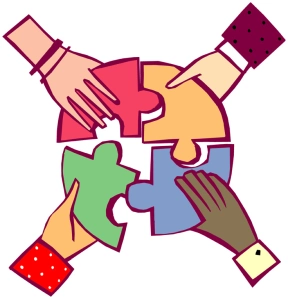Vodpod videos no longer available.
Yesterday, United Nations’ Secretary-General Ban Ki-moon, in remarks to a special General Assembly Thematic Debate on Human Trafficking related the story of Grace Akallo.
“Grace Akallo was a young high school student in Uganda who dreamed of being the first person from her village to go to university. Then came the Lord’s Resistance Army. Rebels took her and 138 other girls from their dormitory and marched them into the forest.
Grace told her story at the Security Council last week. I listened with the heaviest of hearts. “My spirit died,” she said, recounting how she was forced to kill and was repeatedly raped.
She was followed into the forest by the headmistress, Sister Rachele, who confronted the rebels. They threatened to kill her in front of the girls. She was asked to leave, but instead she faced them down, risking her own safety so that others could be freed. In the end, she was able to rescue more than 100 girls.”
The Secretary-General then challenged those present. “If this seemingly powerless educator from Uganda could face down armed rebels, surely we in this room can stand up to this threat with bold and decisive action.
Trafficking in weapons, drugs and blood diamonds has long been on the UN agenda. Now we must add people to that list.
I spoke just now about Uganda, but examples could be drawn from any of a number of countries from Asia, across the Americas, to Europe. Millions are bought and sold like chattel, most of them women and children.”
He called on member states to:
- Criminalize human trafficking. All countries must ratify the UN anti-trafficking Protocol.
- Prevent victimization by teaching people about their rights and protecting them.
- Reduce demand.
- End to impunity.
- Protect the victims.
The Secretary-General’s call for a coordinated effort to combat forced labor and human trafficking comes at a time when, because of the world financial crisis and increasing restrictions on legal migration more people are likely to fall victim to traffickers. The most vulnerable, people already living in poverty, especially women and children will suffer the most.
According to a new report by the International Labour Organization (ILO) entitled “The Cost of Coercion”, the value of the work done by people who are trapped in forced labor is over 20 billion US dollars per year.
Trafficking and forced labor are a scourge that reaches across the globe. The ILO report highlights facts and figures from each region.
Europe and Central Asia
Trafficking in Europe reflects shifts in patterns of economic development and the gradual enlargement of the European Union. While most of the victims identified by authorities are women trafficked for sexual exploitation, the number of cases of men trafficked for labor exploitation is on the rise. A recent case in Italy illustrates the international nature of the business of trafficking. Police discovered a group of Chinese workers trapped in forced labor in a hidden factory. A lengthy investigation revealed that the leader of the trafficking ring that brought these workers to Italy lived in a suburb of Paris.
Asia
The biggest share of the world’s forced laborers are from Asia. Many are migrants, either from elsewhere in Asia or from their home country. Three issues are of particular concern.
- The persistence of bonded labor systems, particularly in South Asia, despite legislation to ban it.
- Widespread trafficking of children and adults, for both sexual and labor exploitation.
- Continued use of forced labor by the State and official institutions, notably in Myanmar.
Africa
Sub-Saharan Africa is the region with the third highest incidence of forced labor in relation to population after Asia and Latin America. It reflects long-standing patterns of discrimination against vulnerable groups, sometimes linked to the historical legacy of slavery. People in areas of conflict are at risk, an extreme example being child soldiers. There is trafficking of people for labor and sexual exploitation both within and across African countries and to Europe, North America, and the Middle East. Women are especially affected.
Americas
Latin America accounts for the second largest number of forced laborers in the world after Asia. Those most at risk are migrant workers in sweatshops, agriculture and domestic service. The main form of forced labor is through debt bondage.
Forced labor in Latin America is closely linked to patterns of inequality and discrimination especially against indigenous peoples.
In the United States and Canada the increased focus on human trafficking have brought to light more and more cases of forced labor among foreign workers, particularly in debt bondage in agriculture and domestic service.
Middle East
Forced labor and human trafficking are closely intertwined with migration in the Middle East, particularly in the Gulf States where there is a high proportion of migrant workers mainly from Asia. Labor recruitment companies operating in source countries alter contract terms and charge high recruitment fees, which the worker must ultimately repay. Employers retain control of work visas and illegally buy, sell and trade them. These costs are also passed on to the workers creating a situation of debt bondage.
The United Nations General Assembly is considering the request of some member states for a Global Plan of Action on trafficking and forced labor. The Secretary-General urged all States, whether they support this proposal or not, to move beyond fine rhetoric and moral outrage to deeds particularly by mainstreaming the fight against human trafficking into broader programs, from poverty reduction to reducing gender discrimination.
Links
Has your country ratified the UN anti-trafficking protocol? Find out here: http://www.unodc.org/unodc/en/treaties/CTOC/countrylist-traffickingprotocol.html
Resources on human trafficking from the International Organization for Migration
English: http://www.iom.int/jahia/Jahia/counter-trafficking/lang/en
Español : http://www.iom.int/jahia/Jahia/activities/by-theme/regulating-migration/counter-trafficking/lang/es
UN.Gift – Global Initiative to Fight Human Trafficking – http://www.ungift.org/


 Today the United Nations marked World AIDS Day by highlighting the connection between human rights promotion and successful efforts to combat the HIV/AIDS.
Today the United Nations marked World AIDS Day by highlighting the connection between human rights promotion and successful efforts to combat the HIV/AIDS. Early in May several NGOs urged their members to write to their government leaders and and urge them to personally attend the United Nations Conference on the World Financial and Economic Crisis and its Impact on Development, originally scheduled for June 1-3, here in New York. Only occasionally do we get to see results from the letters and emails we send to government officials but it is clear that our our action in May is having an impact. The US Mission to the UN indicated that more that 700 letters were received on this topic!
Early in May several NGOs urged their members to write to their government leaders and and urge them to personally attend the United Nations Conference on the World Financial and Economic Crisis and its Impact on Development, originally scheduled for June 1-3, here in New York. Only occasionally do we get to see results from the letters and emails we send to government officials but it is clear that our our action in May is having an impact. The US Mission to the UN indicated that more that 700 letters were received on this topic!

 The annual Commission on the Status of Women took place during the first two weeks of March at the United Nations in New York. This commission was established in 1946 to promote, report on and monitor issues relating to the political, economic, civil, social and educational rights of women. The theme this year was “The equal sharing of responsibilities between women and men, including caregiving in the context of HIV/AIDS.”
The annual Commission on the Status of Women took place during the first two weeks of March at the United Nations in New York. This commission was established in 1946 to promote, report on and monitor issues relating to the political, economic, civil, social and educational rights of women. The theme this year was “The equal sharing of responsibilities between women and men, including caregiving in the context of HIV/AIDS.”

